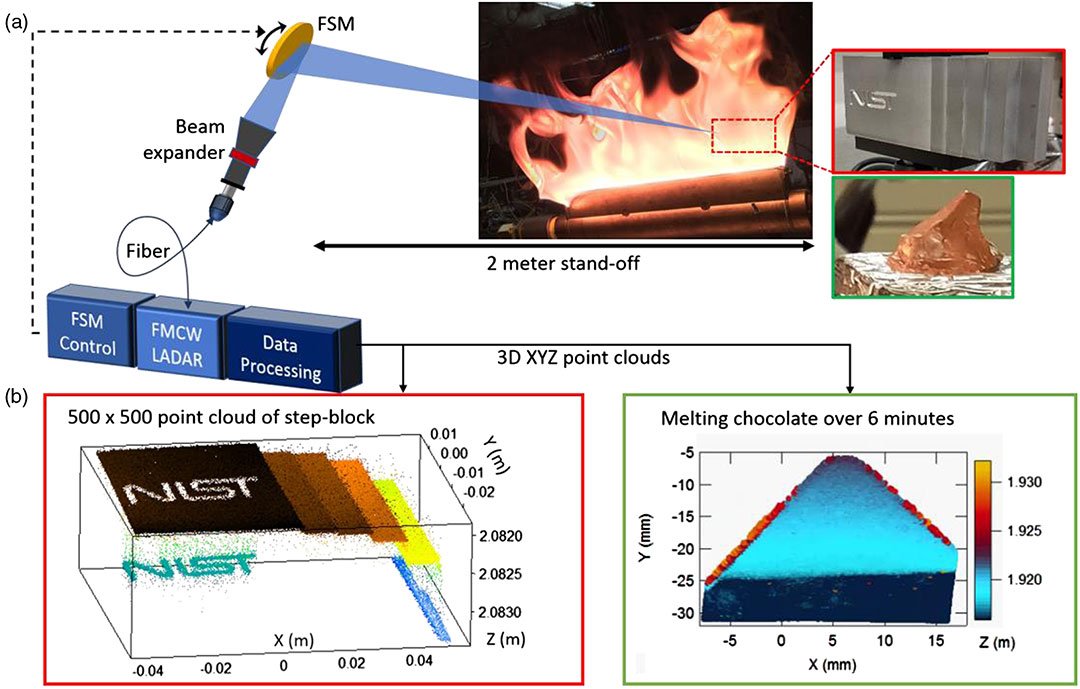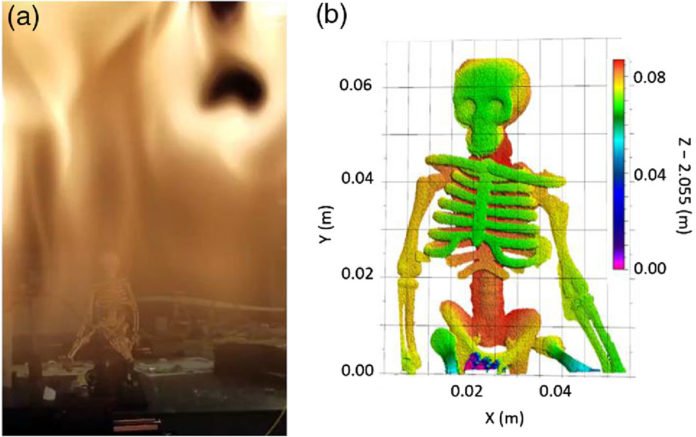Using laser detection and ranging (LADAR) system melting 3D objects, scientists at the National Institute of Standards and Technology (NIST) have set an example of a precise, safe and compact way to measure structures as they collapse in fires. The method outline to objects melting behind flares that created fluctuating measures of soot.
The analysis estimated 3D surfaces with an exactness of 30 micrometers (millionths of a meter) or better from 2 meters away. This level of accuracy meets necessities for most basic fire investigate applications.
LADAR system is sensitive enough to image objects even when small amounts of soot are present in the flames. It works efficiently even when for long distances.

Credit: NIST
In the 3D mapping system, a laser clears consistently over a band of optical frequencies. The underlying laser yield is joined with the reflected light from the objective. The subsequent “beat” signals are recognized, and this voltage is then dissected by computerized flag handling to create time-postpone information, proportional to separate.
Scientists effectively connected LADAR to quantify and delineate “point clouds”— points are the “voxels” constituting a picture—even in a tempestuous fire condition with solid signal diffusing and bending. For examination, the group additionally made recordings of the chocolate as it liquefied and pictures of a more intricate plastic skeleton.
The researchers determined that the LADAR system was fast enough to overcome signal distortions and that deflections of the laser beam due to the flames could be accommodated by averaging the signals over time, to retain high precision.
The preliminary results suggest that the LADAR technique could be applied to larger objects and fires. The NIST team now plans to scale up the experiment, first to make 3D images of objects through flames about 1 meter wide, and if that works, to make quantitative observations of larger structural fires.
Scientists have published their paper in the journal Optica.
